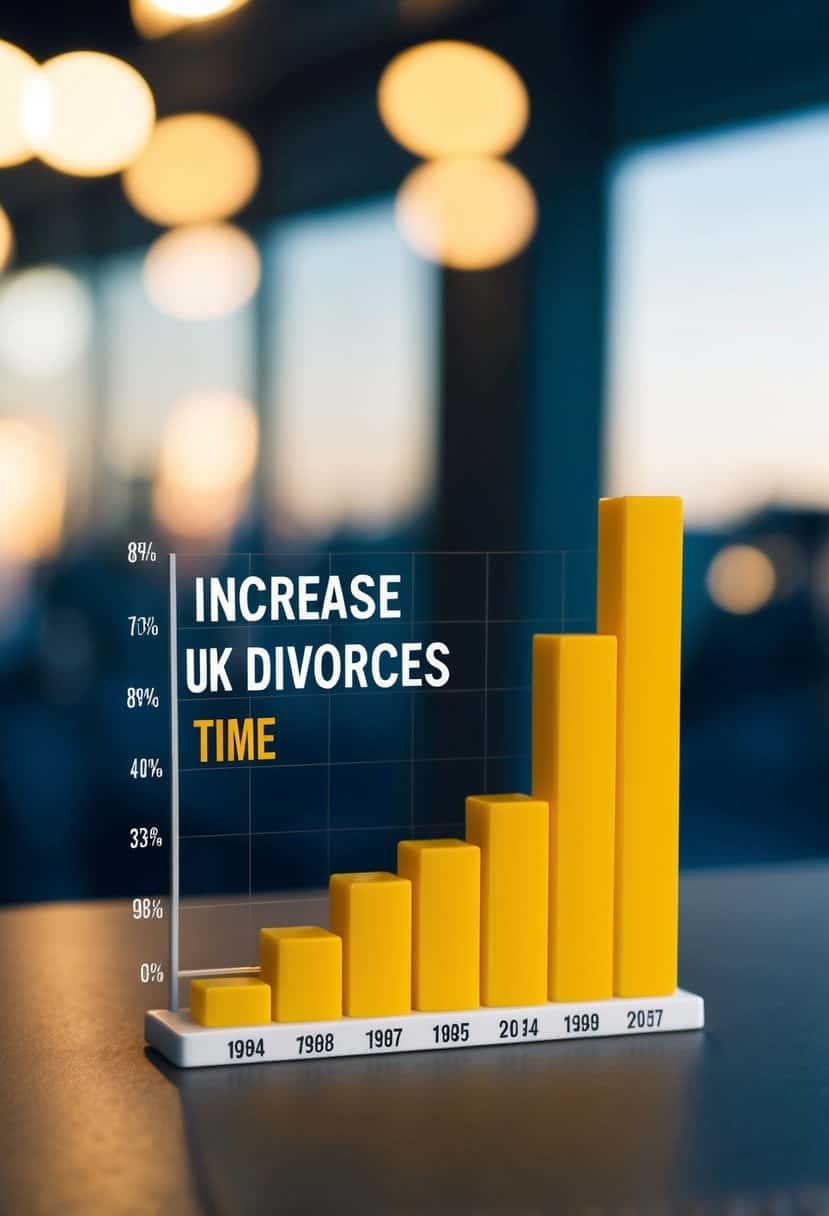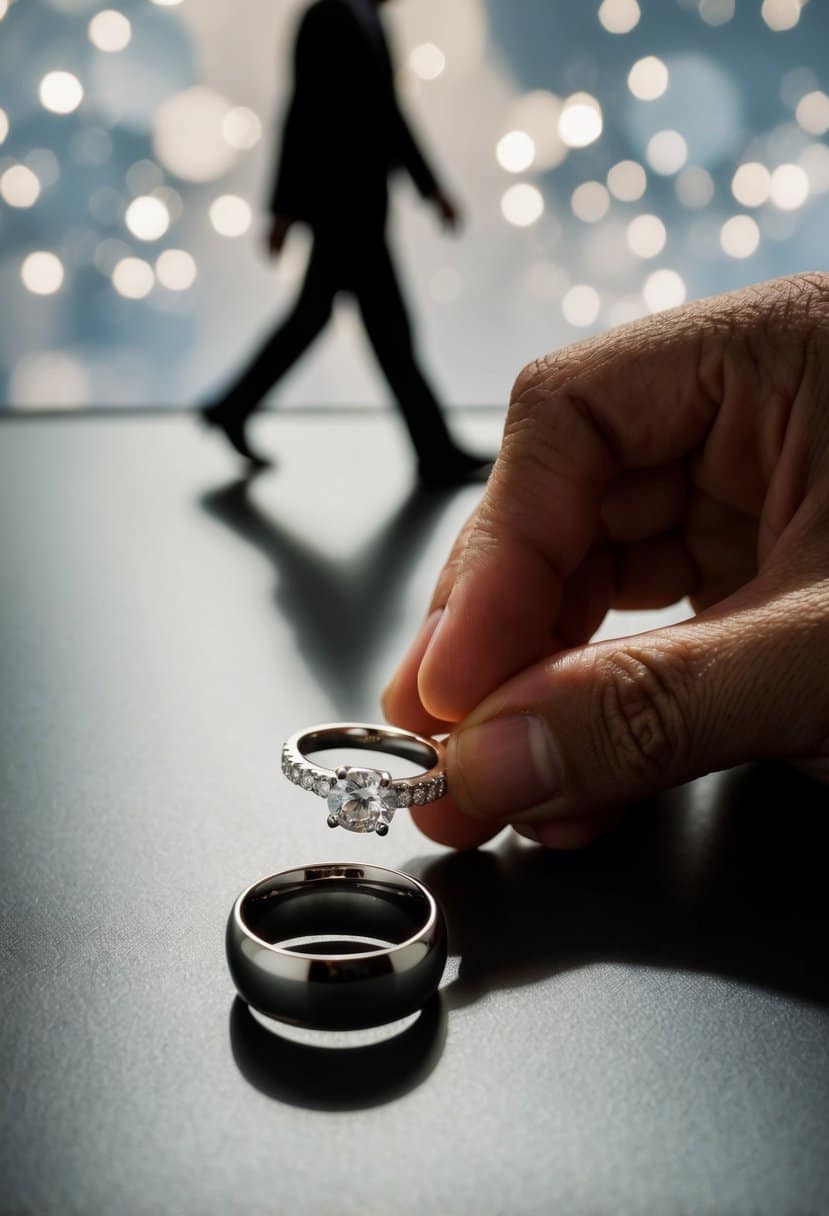How Many Weddings End in Divorce in the UK? Understanding the Numbers
When thinking about tying the knot, it’s natural to wonder about the journey ahead. Marriage is a beautiful union, but many marriages in the UK do end in divorce. In England and Wales, a significant portion of marriages over time has ended this way. For example, as of recent data, nearly half of all marriages could potentially end in separation. This statistic can give anyone pause, but it also highlights the changing dynamics and challenges of modern relationships.

You might be curious about why these numbers are the way they are and how they have shifted over time. According to the Office for National Statistics, changes in societal norms, legal reforms, and various social factors all play a role. Understanding these shifts can provide insight into how couples are navigating their marriages today.
Though the numbers might seem high, it’s important to remember that each couple’s situation is unique. Exploring the reasons and trends behind these statistics offers a better understanding of how marriage evolves in the UK. Whether you’re married, planning to marry, or just curious, delving into these patterns can provide valuable perspectives on relationships.
Understanding the Divorce Rate in the UK

Divorce rates in the UK have fluctuated over the years, with recent data showing differences between opposite-sex and same-sex couples. It’s important to know what historical factors and current trends impact these rates.
Historical Perspective on Divorce Rates
The divorce rate in the UK has changed significantly over time. In the past, divorce was less common, but several factors led to changes. The Divorce Reform Act of 1969 made it easier for couples to end their marriages, leading to a rise in divorce rates in the following decades.
Divorces reached high numbers in the late 20th century. Many couples chose to separate due to societal changes that placed less stigma on divorce. For instance, the average divorce rate from 1964 to 2019 was about 31.8%, with significant increases in some years. As you can see, understanding these historical changes helps provide context for today’s trends.
Comparing Opposite-Sex and Same-Sex Couples
In recent years, there’s been a noticeable difference in divorce rates between opposite-sex and same-sex couples. In 2021, there were 111,934 divorces involving opposite-sex couples, marking an increase compared to previous years. Of these, 63.1% were initiated by females.
In contrast, the data on same-sex divorces is more limited but offers insight into different trends. The median duration of marriages that ended in divorce in 2022 was about 12.9 years for opposite-sex couples, showing that marriages are lasting longer. These trends highlight changing dynamics and attitudes towards marriage and divorce for different types of couples in the UK society today.
Statistical Analysis of UK Divorces

Understanding divorce trends in the UK helps you see how relationships evolve. These numbers highlight patterns, such as marriage length before divorce and how many couples split each year.
Divorce Statistics by Duration of Marriage
The duration of marriages is a key aspect of divorce statistics. In 2022, the median length for opposite-sex couples was 12.9 years. This means half of these marriages lasted longer and half ended sooner. Shorter marriages can vary in length. Same-sex couples see different trends, with median durations often being shorter. For example, female same-sex couples showed a median of 7.5 years, while male same-sex couples saw 6.3 years.
Knowing these figures can help you understand how long relationships tend to last before reaching the point of divorce. It paints a picture of how marriage dynamics shift over time in the UK.
Annual Divorce Numbers and Rates
In 2022, there were 80,057 divorces granted in England and Wales. This represents a significant drop from 2021, when there were 113,505 divorces. It’s the lowest since 1971, marking a notable shift in the trend. The Office for National Statistics data also highlights a decrease of 29.5% from the previous year.
Watching these number changes each year gives you a clearer idea of societal patterns in marriage and divorce. It reflects changes in family life and cultural attitudes, impacting how often and why couples decide to part ways.
Legal Aspects of Divorce in the UK

In the UK, divorce is a legal process that involves specific grounds and is guided by recent legislation changes. Understanding these legal aspects is important if you are considering or going through a divorce.
Grounds for Divorce
When you petition for divorce in the UK, you’ll need to establish a valid reason. Historically, grounds included adultery, unreasonable behavior, desertion, living apart for over two years with mutual consent, or living apart for more than five years without consent. Adultery must be proven with evidence or an admission to be used as a ground. Unreasonable behavior can cover various actions, such as physical violence or emotional neglect.
Your specific situation will direct which grounds are most suitable. Consulting a legal professional can help you determine the right approach based on your circumstances. The Ministry of Justice provides further guidance on valid grounds and legal procedures to help you understand what to expect.
The Divorce, Dissolution and Separation Act
The Divorce, Dissolution and Separation Act of 2020 brought significant changes to how divorce proceedings are handled in the UK. One of the major changes is the introduction of “no-fault” divorces. Now, you can apply for a divorce without blaming the other party or proving fault. This modernized approach aims to reduce conflict between parties and simplify the process.
This act allows both individuals or a joint application to petition for divorce. Furthermore, it established a minimum timeframe of 20 weeks from the initiation to the conditional order, allowing time for reflection and planning. This ensures that you have adequate time to consider your decisions and openly communicate with your former partner.
The Social Dynamics of Divorce

In the UK, divorce is not just about legal separation. It often reflects deeper changes in how people live together and interact. Factors like cohabitation before marriage and certain social behaviors can play significant roles in influencing divorce rates.
Impact of Cohabitation on Marriage and Divorce
Cohabitation before marriage has become more common in the UK. You might think living together first helps, but studies show mixed results. Some couples who live together report stronger relationships, understanding each other’s habits and preferences. Yet, others find that cohabitation leads to complacency, reducing the excitement or commitment once they marry.
For some couples, cohabitation is a sort of trial run for marriage. But there may be impacts of cohabitation on long-term relationship stability. While it can solidify bonds for some, others might feel less inclined to marry, leading to fewer long-term commitments and increasing the risk of eventual separation.
Role of Social Behaviors in Divorce Rates
Certain social behaviors can significantly affect whether a marriage succeeds or fails. For instance, behavior labeled as ‘unreasonable’—like lack of communication or constant arguments—can put pressure on any relationship. In the UK, divorces often cite unreasonable behavior as a primary reason.
In some cases, changing social norms make it easier for people to leave unsatisfying marriages. Support networks and social groups sometimes encourage individuals to prioritize personal happiness, even if it means ending a marriage. Consequently, shifts in societal attitudes towards marriage and divorce also play a crucial role in shaping these dynamics.
Data and Statistics Resources

Reliable data on divorce rates in the UK can help you understand how many marriages and civil partnerships end in separation. Diverse resources provide insights, including government reports and family court statistics. These sources offer detailed figures and trends.
Official Statistics Reporting
The Office for National Statistics (ONS) provides official statistics on marriages and civil partnerships. They offer an overview of trends in divorce over the years.
You can find recent data, like the report stating that in 2022 there were 80,057 divorces in England and Wales.
Family court statistics quarterly is another useful source. These reports can give you current updates on cases handled by family courts, including those related to divorce and civil partnerships.
By studying these statistics, you gain a better sense of how often marriages and partnerships dissolve legally.



